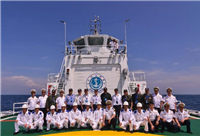

 |
| Wang Yongyao, a NPC deputy and mayor of Shizuishan of northwest China's Ningxia Hui Autonomous Region gives an interview with Xinhuanet, March 9, 2015. (Photo source: Xinhuanet photo) |
BEIJING, March 19 -- Shizuishan, a resource-dependent city in northwest China's Ningxia Hui Autonomous Region, aims to control its energy consumption under 16.5 million tec in 2017 and cut energy consumption per unit GDP by 17 percent from 2013, said Wang Yongyao, the mayor and a NPC deputy in an exclusive interview with Xinhuanet.
In 2013, China identified 262 resource-dependent cities in its first national framework plan for the sustainable development of those cities.
The plan placed the cities into four categories based on their resource sustainability: "emerging," "mature," "declining" and "regenerative". Shizuishan fell into the category of "declining", meaning its resource is becoming exhausted and ecological environment faces severe challenges.
Since, Shizuishan has unswervingly advanced transformation in industry, livelihood and ecological development in recent years, said Wang.
Remarkable accomplishments have been achieved in terms of economic scale, industrial structure, and quality and efficiency of development, he said.
Through exploratory practice, Shuizuishan has an ever-clearer idea for industry transformation and development, he added.
The mayor added it will foster new material and equipment manufacturing industries, transform and upgrade calcium carbide chemical and metallurgical industries, and accelerate producer services and cultural tourism, as well as promote agricultural produce processing industry.
Driven by innovation, the city is changing from one that merely relied on resources, energy and environment into one of more balanced industrial layout and economic growth, he noted.
 J-11 fighters in air exercise
J-11 fighters in air exercise Beauties dancing on the rings
Beauties dancing on the rings Attendants-to-be join Mr. & Miss Campus Contest
Attendants-to-be join Mr. & Miss Campus Contest Beijing's toughest anti-smoking law takes effect
Beijing's toughest anti-smoking law takes effect Family lives in cave for about 50 years in SW China
Family lives in cave for about 50 years in SW China PLA soldiers operating vehicle-mounted guns in drill
PLA soldiers operating vehicle-mounted guns in drill Blind carpenter in E China's Jiangxi
Blind carpenter in E China's Jiangxi China hosts overseas disaster relief exercise for the first time
China hosts overseas disaster relief exercise for the first time 20 pairs of twins who will become flight attendants in Sichuan
20 pairs of twins who will become flight attendants in Sichuan Obama is sowing discontent in S.China Sea
Obama is sowing discontent in S.China Sea Rescuers work through night to reach cruise ship survivors
Rescuers work through night to reach cruise ship survivors Driving through limbo
Driving through limbo Facing down MERS
Facing down MERSDay|Week